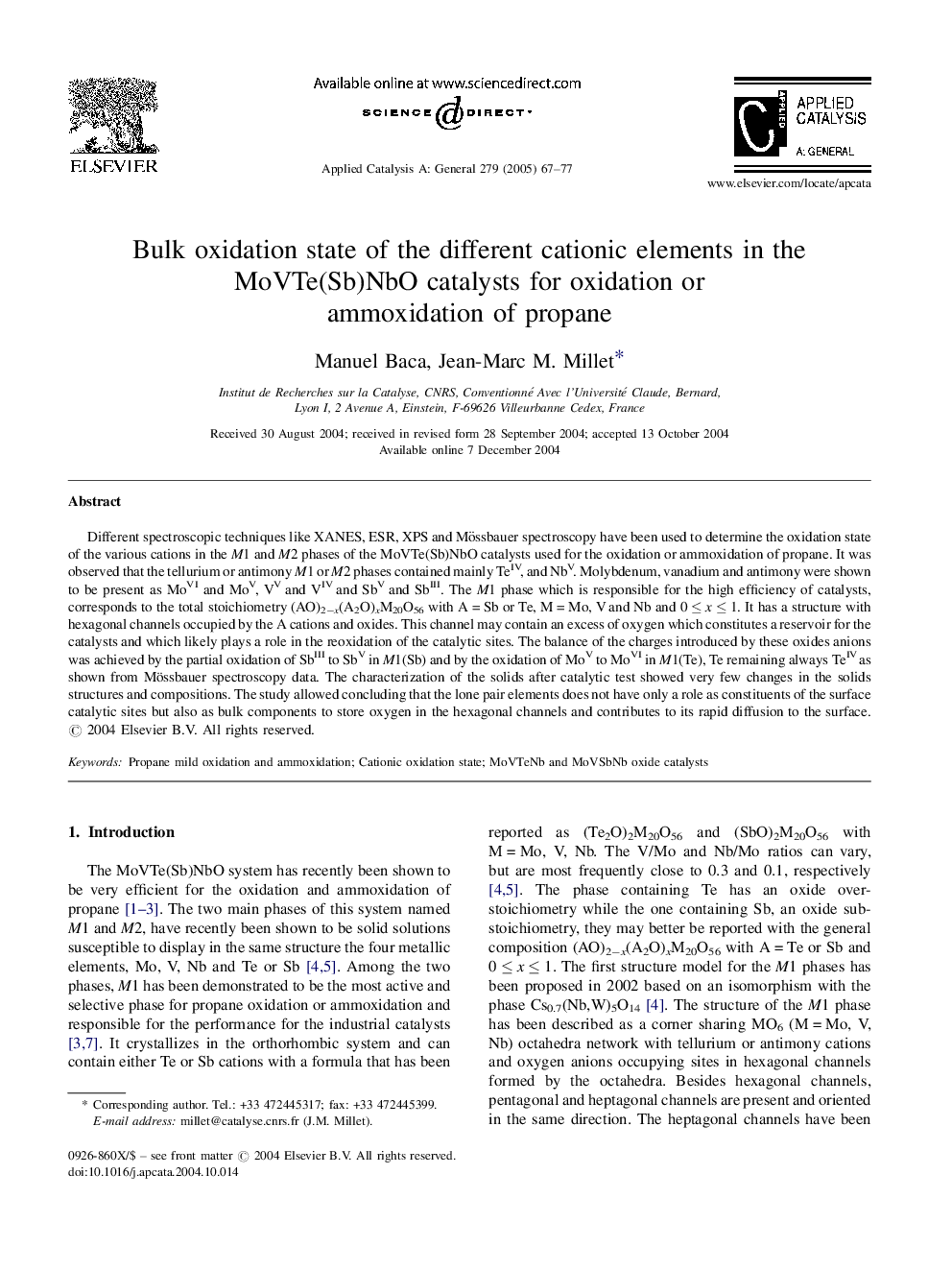| Article ID | Journal | Published Year | Pages | File Type |
|---|---|---|---|---|
| 9608136 | Applied Catalysis A: General | 2005 | 11 Pages |
Abstract
Different spectroscopic techniques like XANES, ESR, XPS and Mössbauer spectroscopy have been used to determine the oxidation state of the various cations in the M1 and M2 phases of the MoVTe(Sb)NbO catalysts used for the oxidation or ammoxidation of propane. It was observed that the tellurium or antimony M1 or M2 phases contained mainly TeIV, and NbV. Molybdenum, vanadium and antimony were shown to be present as MoVI and MoV, VV and VIV and SbV and SbIII. The M1 phase which is responsible for the high efficiency of catalysts, corresponds to the total stoichiometry (AO)2âx(A2O)xM20O56 with A = Sb or Te, M = Mo, V and Nb and 0 â¤Â x â¤Â 1. It has a structure with hexagonal channels occupied by the A cations and oxides. This channel may contain an excess of oxygen which constitutes a reservoir for the catalysts and which likely plays a role in the reoxidation of the catalytic sites. The balance of the charges introduced by these oxides anions was achieved by the partial oxidation of SbIII to SbV in M1(Sb) and by the oxidation of MoV to MoVI in M1(Te), Te remaining always TeIV as shown from Mössbauer spectroscopy data. The characterization of the solids after catalytic test showed very few changes in the solids structures and compositions. The study allowed concluding that the lone pair elements does not have only a role as constituents of the surface catalytic sites but also as bulk components to store oxygen in the hexagonal channels and contributes to its rapid diffusion to the surface.
Related Topics
Physical Sciences and Engineering
Chemical Engineering
Catalysis
Authors
Manuel Baca, Jean-Marc M. Millet,
